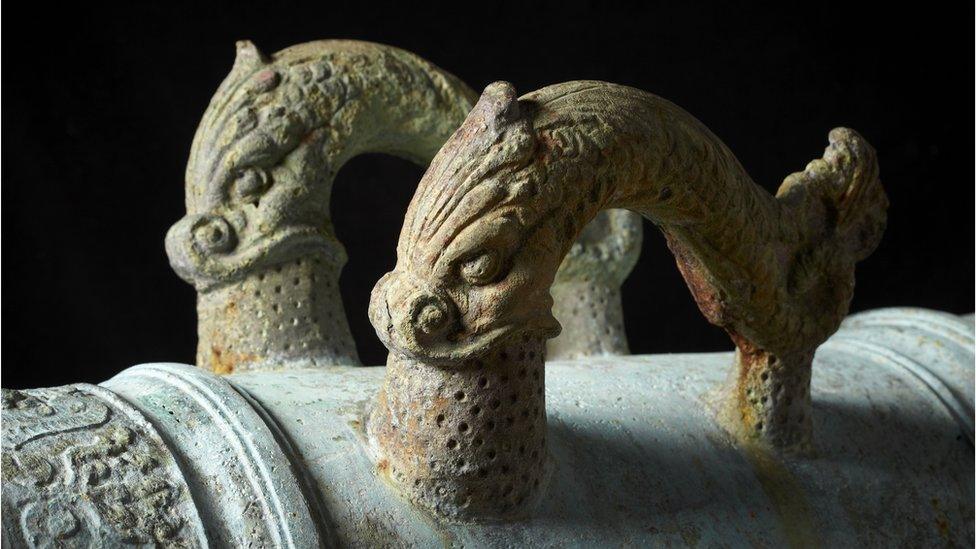Mystery over latest find from HMS Severn warship wreck
- Published
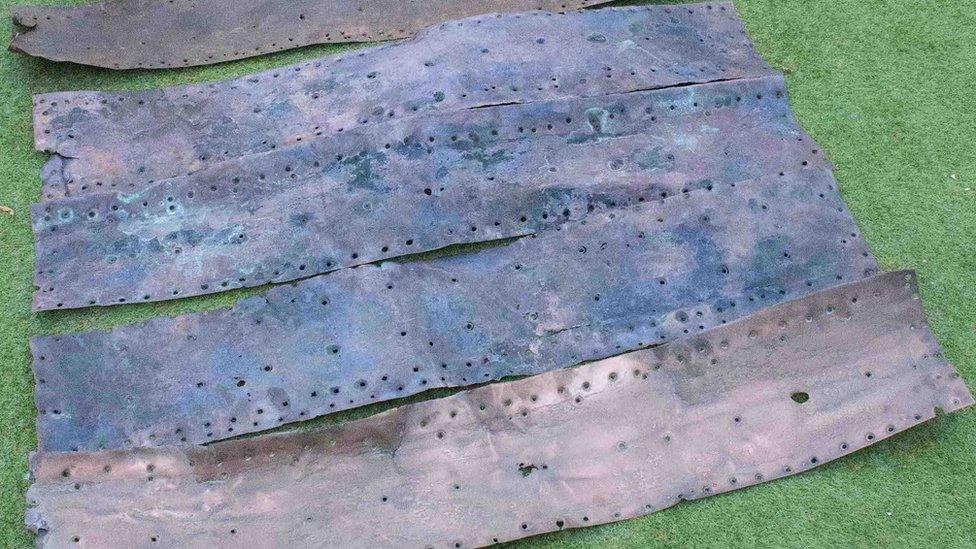
In the 18th Century the Royal Navy attached plates to ships in a technique called copper sheathing
The newest find from a 200-year-old shipwreck has prompted a mystery for detectorists in Jersey.
Johnathan Bull was looking for relics from World War Two when he found copper plates from what is thought to be the HMS Severn.
He said the "awesome" find ticked a box on his detecting "bucket list".
But experts are curious about the location of the plates in Grouville Bay, found 0.6 miles (1km) away from the ship's suspected wreck site.
Mr Bull and other detectorists found 22 of the plates in September.
They are thought to be from the fourth Royal Navy ship to be named HMS Severn, which was wrecked in a gale off the same bay in 1804.
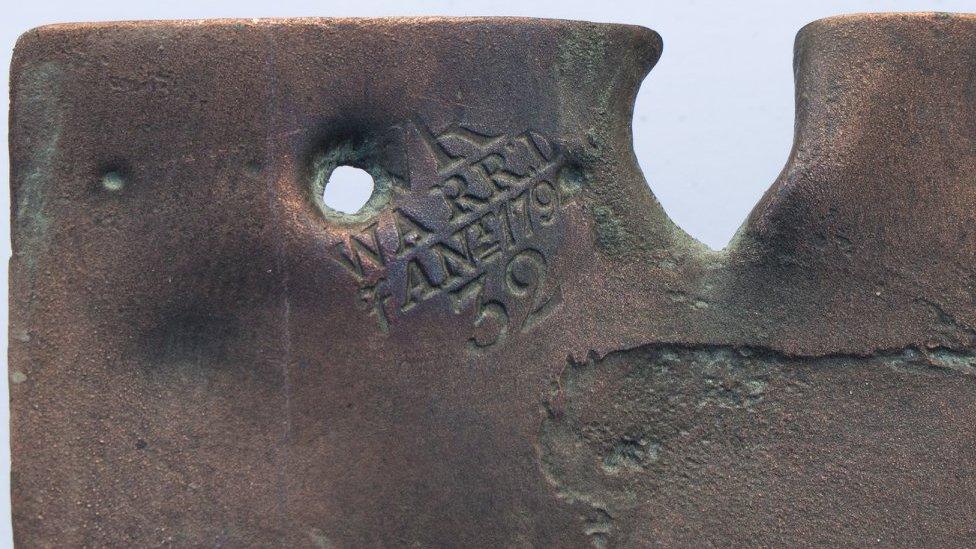
The stamp reads: MR for Mines Royal, Warr'd for warranted, and the date stamp of 1794
"When the marked pieces came up we thought it's possibly the Severn, those of us into our detecting or into our local history know the Severn is down there, but we needed to be 100% or as close as we could be," Mr Bull said.
One of the plates was stamped with the year 1794, the same year the HMS Severn was refitted at Plymouth dockyard.
Mr Bull contacted an expert on copper sheathing, John Bingeman, who said the stamp was likely put on by workers at Mines Royal, who produced the sheets which were later hammered on to the ship's hull.

Copper sheathing was used to protect ships from "shipworms", molluscs which drilled into them
Chris Langlois, part of the Jersey Metal Detecting Society who found a gun carriage from HMS Severn in 2013, said the copper posed further questions about the wreck.
"The finding of this material is far away from the wreck. It was relocated, maybe salvaged or lost, we don't know," he added.
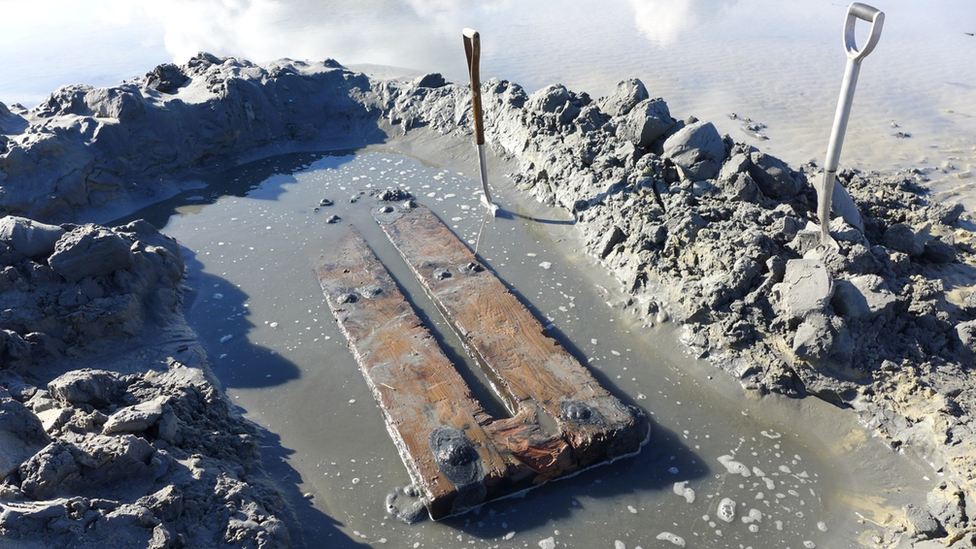
Chris Langlois's detectorist group found a carriage where one of the ships guns would have been mounted
Detectorists and heritage workers have narrowed down where the bulk of the wreck may be over the past five years, according to Mr Langlois.
"We're really trying to find something substantial of this wreck apart from wreckage," he said.
"We plan to collaborate in January [with other detectorists] to give it one last bash to see if there's anything more down there."

The fourth HMS Severn

A scale model of the fourth HMS Severn's hull was found at Berkeley Castle in Gloucestershire in 2013
According to the Royal Navy, the fourth HMS Severn was built in Bristol and launched in 1786 as an Adventure Class fifth rate frigate, equipped with 44 guns.
Phillipe D'Auvergne, the vessel's last commander, is said to have been given the ship to reinforce Jersey's defences as France, just 14 miles away from the island, was falling under the control of Napoleon.
The Mariner's Chronicle, which documents "remarkable disasters at sea" in the 19th Century, said in December 1804 a strong gale blew HMS Severn from Elizabeth Castle in St Helier, Jersey, to Grouville Bay.
The ship hit rocks in the bay, and other vessels were used to rescue the 300 men garrisoned inside. She later sank and was left on the ocean floor.
Just over 213 years later, Mr Langlois and his mother found the well preserved gun carriage from the wreck, and teams started work to find the rest of the ship.
- Published22 March 2018
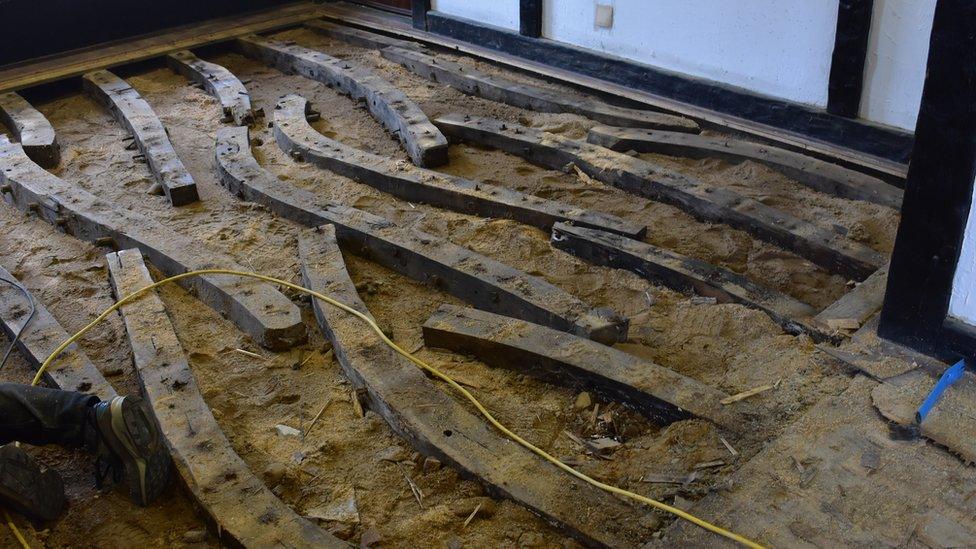
- Published16 September 2018
